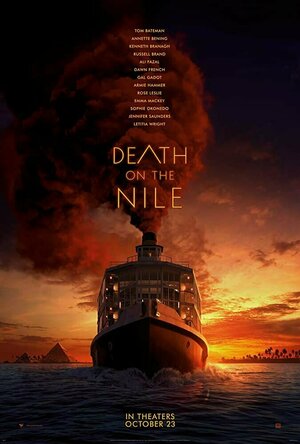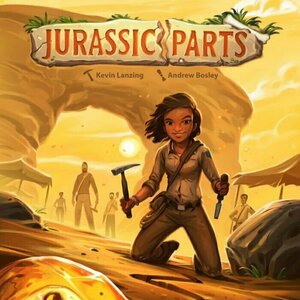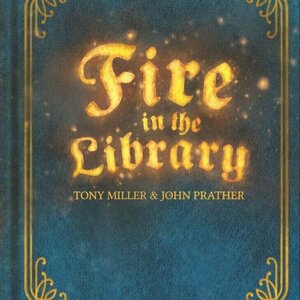
Scanner - Document and Receipt PDF Scanner
Business and Productivity
App
Scanner is currently the fastest and most powerful tool for scanning documents and QR-codes. You can...

Build A BBQ Smoker
Reference and Productivity
App
Learn how to make your own Barbeque Smoker with this series of 75 tuitional video lessons. Lessons...
Gareth von Kallenbach (980 KP) rated Bad Santa 2 (2016) in Movies
Jul 12, 2019
It is surprising to say but this sequel to 2003s Bad Santa is even more outrageous and raunchy than the original. Billy Bob Thornton is perfect in this role as a sex crazed and barely functioning alcoholic. Willie is truly the Anti-Santa Claus. But with Thurman having faith in him and in his very out of the box way of trying to do good, you can’t help but root for him to succeed. Kathy Bates performance as a crude as can be equal to Thornton’s character was fun and unexpected. The full cast of characters are all unique and all bring something to the film. The story however is very familiar and not that far off from the first film. There were definitely jokes and plot lines that followed too closely, in my opinion, to the original film. This is definitely not a film for young audiences, as most of the film is profanity laced and full of sexual situations and innuendos. But for the adult audience there are a lot of laughs to be had. For me this was a perfect film to shut off for an hour and a half and just enjoy the craziness happening on screen. It is not an overthought or over complicated film. They took things from the original film that were successful changed them up a little, not enough at some points, and made everything a little more over the top.
I wouldn’t necessarily recommend paying movie theater prices for this film but it is definitely worth a watch for the right audiences.

SlideShark Presentation App
Productivity and Business
App
SlideShark is the award-winning app used by sales professionals and other presenters to present and...

Scanner Lite - Document and Receipt PDF Scanner
Business and Productivity
App
Scanner is currently the fastest and most powerful tool for scanning documents and QR-codes. You can...

TacticsBoard HD for Coaches of 22 Sports
Sports and Utilities
App
Would you like to have a personal coaching board can be used to draw plays for 22 sports and can be...
BankofMarquis (1832 KP) rated Death on the Nile (2022) in Movies
Mar 16, 2022
And that is too bad for the latest Kenneth Branagh Hercule Poirot mystery DEATH ON THE NILE with Branagh starring, again, as the great Agatha Christie Belgian Detective is the stuff that makes going to movies fun - big characters, major stars, gorgeous scenery and a plot that will keep one guessing until the end.
Branagh’s previous work as Director and star of MURDER OF THE ORIENT EXPRESS was a bit of a disappointment as it was gorgeous and well cast - but the pacing of the film dragged and Branagh decided, inexplicably, to add an action scene to a drawing room mystery.
In DEATH ON THE NILE, Branagh (who Directed this film from an screenplay by Michael Green who adapted the Agatha Christie novel), corrected these mistakes and the film moves along spritely with the actors chewing the scenery - but quickly - making this a very enjoyable movie-going experience.
Branagh, in his second go-around as Poirot, seems much more relaxed and comfortable with his character. This is, perhaps, because they add a backstory to Poirot, so he has much more to set his character upon. On the surface, purists of the the Agatha Christie character will blanche at the thought of adding a backstory, but I’ll be darned if it doesn’t work and adds a layer of depth to the character and the film that I wasn’t expecting.
The All-Star cast knows what type of film they are in - and what is expected of them - and they deliver. Gal Gadot, Armie Hammmer, Rose Leslie, Letitia Wright, Jennifer Saunders, Sophie Okonedo and, surprisingly, Russell Brand all shine brightly in their “moment” that their character gets with Poirot. Special notice needs to be made of Annette Bening’s performance. It was GREAT to see this wonderful actress get a role she could sink her teeth into.
As always, with this type of film, the settings and costumes take a prominent position and they do not disappoint. Cinematographer Haris Zambarloukos should be hired by the Egyptian Chamber of Commerce for he lovingly shows the sites along the Nile River (circa ‘1930’s) in a beautiful poetic way while the Costumes by Pago Delgado are gorgeous and ornate - without being over-the-top.
If you get a chance to see DEATH ON THE NILE on the big screen, do so, you will be well rewarded for your efforts - and just might help get another of these big budget, big star mysteries made. If not, make sure to check this film out when it starts streaming near you - it’s a ton of fun.
Letter Grade: A-
8 stars (out of 10) and you can take that to the Bank(ofMarquis)
Purple Phoenix Games (2266 KP) rated Jurassic Parts in Tabletop Games
May 31, 2021
Jurassic Parts is an interesting mix and spins of area control, enclosure, and set collection for two to five players. In it, players are all paleontologists bent on claiming the biggest and best bones from a giant slab of rock containing dozens of dino species. The catch? Each paleontologist is trying to claim the bones for themselves. Sharp wit, good luck, and a bevvy of sharpened chisels spells success and fame for the paleontologist who wins at collecting Jurassic Parts.
DISCLAIMER: We were provided a copy of this game for the purposes of this review. This is a retail copy of the game, so what you see in these photos is exactly what would be received in your box. I do not intend to cover every single rule included in the rulebook, but will describe the overall game flow and major rule set so that our readers may get a sense of how the game plays. For more in depth rules, you may purchase a copy online or from your FLGS. -T
To setup, set aside one of the Pile of Bones (a wild card, of which there are several in the game) and shuffle the rest of the tiles. Split them into two stacks, flip one stack face-down, and build a slab around the Pile of Bones set aside earlier. This creates the slab of rock the players will be splitting. Each player receives their choice of paleontologist character sheet, chisels in their chosen color, and any pre-start resources per the rulebook. The slab is now ready for splitting!
On a turn, the active player will have several options. Firstly, however, the player must sharpen three chisels by moving them from the Dull Chisels are on the right of their sheet to the Sharp Chisels area on the left. Now the player may place their chisels anywhere on the slab, as long as it is on the gap between two tiles. The purpose of this is to create a wonky line of chisels that will break off sections of the slab from the larger chunk. Players will need to beware of rock piles on either side of their preferred placement, as each rock icon on either side of the placement will require an extra chisel to be dulled and discarded. If a chisel placement would cause a line to be completed, a hunk of the slab is separated from the master slab. Players consult with the line of chisels (as shown below) to determine which player has contributed more to the split than the others. This will rank out all contributing players. The player with the most chisels contributed will be able to claim their choice of HALF of the tiles split off, rounded UP (so a player would receive five tiles from a nine-tile split). The next player in contribution order will then have their choice of HALF of the remaining tiles, rounded UP (so the second player would receive two tiles from the previous example, as there would be four left). Subsequent players would then receive HALF of what is left until all tiles have been claimed, or there remains just one tile. This final tile is then given to the Field Leader for his collection.
In addition to this splitting and claiming on a turn, the active player may also make transactions with the Field Leader at any point during their turn. Actions that can be taken while transacting with the Field Leader are selling one tile to him in exchange for an Amber piece, spending Amber to: ignore rocks on the subsequent two chisel placements, sharpen two additional chisels this turn, take any of the leftover fossil tiles from the Field Leader, or take any fossil tile from the slab (as long as it doesn’t create a split). The first action from the Field Leader will cost the player one Amber. Should they wish to enact another action, its cost is two Amber. Subsequent actions on the same turn cost three Amber each.
As you will notice, fossil tiles from the slab will show plant fossils, Pile of Bones (wild), or actual bones belonging to specific dinosaurs. These specific bones will show an alphabetic letter pair icon to denote to which dinosaur it belongs. If, at the end of the game, players are able to assemble the correct type of fossil tiles belonging to specific dinosaurs, they will score many more points than if the dino skeleton were incomplete. For example, at the end of the game, each fossil tile is worth 1VP if from an incomplete skeleton. However, should a player have completed a Velociraptor skeleton, they will receive 4VP for those two tiles. A completed Triceratops scores 7VP, a T-Rex scores 10VP, a Brachiosaurus scores 15VP, and a tiny Pterodactyl scores 1VP for a complete skeleton because it spans only one tile. The Pile of Bones tiles in the game can be used in place of any other fossil tile to complete a skeleton, and Plant tiles score increasingly more points for a larger collection of them.
Play continues in this fashion of sharpening and placing chisels, breaking off sections of the slab and claiming fossil tiles, and utilizing actions at the Field Leader until all slab tiles have been assigned. The player with the most points from complete and incomplete skeletons and plants will be crowned the winner and the greatest paleontologist in the land… until the next playthrough.
Components. You know how you come to expect certain things from publishers, and can just imagine the quality of the game you are about to receive before seeing it? Such is the case with 25th Century Games. I KNOW that I will be receiving a quality product every time, and this certainly is no exception. The fossil tiles are great and sturdy. The chisels are neatly-designed and multifaceted (which I appreciate, as it would be easy to include tubular chisels and have them rolling around the table everywhere). The amber bits are the typical gemstones you find in Century: Golem Edition, but are the absolute PERFECT color and usage for this game. And did you see that first player marker? It’s a mosquito inside a polished amber stone. I mean, COME ON! How perfect is that? I’m excited just TALKING about the components. I haven’t even touched on art yet, and this is longer than most of my components paragraphs. The art is fabulous. It fits the game and the theme so perfectly – I could not have chosen a better fit myself. Has 25th Century Games set the bar too high for themselves, or will they continue to offer high quality games from here on out? I cannot wait to find out!
So sure, it looks great, but what about the gameplay? Do the art and components merely shield a mediocre game? No. Not at all. Being able to place chisels anywhere you like on the board offers players a freedom that is refreshing, but weighing that against the pressure to contribute to an existing or emerging line of chisels so that you are included in the split is just wonderful. Contemplating turns to sell off fossil tiles in order to earn enough amber to gain more chisels, or bypass rocks, or simply take the perfect tile for your collection offers just enough tacticization (why isn’t that a word…) to warm up the brain without indulging the AP in some players.
This is not at all a heavy game, and it certainly doesn’t need to be. It is just a fun time with friends and family that utilizes interesting twists of mechanics that I enjoy. It feels reminiscent of several games (hints of Through the Desert and a twist on I Split You Choose), but it entirely its own design. Purple Phoenix Games gives this one very rewarding 10 / 12. I generally enjoy most dinosaur-themed games, I understand, but this one sits among the best I have played. If you are looking for something that feels both familiar and fresh, with incredible art and components, you need to grab a copy of Jurassic Parts. There are just so many interesting choices to be made and strategies to attempt. I think I will setup a game right now. Want to come play?
Purple Phoenix Games (2266 KP) rated Fire in the Library in Tabletop Games
Feb 11, 2020
Fire in the Library is a push-your-luck card game that rewards players for pushing their luck well beyond their comfort zones… but as with all push-your-luck games, defeat is also imminent.
DISCLAIMER: We were provided a copy of this game for the purposes of this review. This is a retail copy of the game, so what you see in these photos is exactly what would be received in your box. I do not intend to cover every single rule included in the rulebook, but will describe the overall game flow and major rule set so that our readers may get a sense of how the game plays. For more in depth rules, you may purchase a copy online or from your FLGS. -T
To setup, each player will choose a player color, place their Libreeple (I think it’s Libreeple anyway) near the scoring track, and take the corresponding Player Reference Card. The Library will next be built from sequential Library Cards. The Library is a group of individual decks of cards arranged in a 2×2 pattern, and the card fronts create a lovely picture of the Library. Add all cubes of five different colors to the Library Bag (keeping aside 10 red “fire” cubes). Shuffle the Tool Cards deck, deal each player two Tool Cards, place the top three Tool Cards face-up next to its deck to form the Tool Card Market. Shuffle the Turn Order Cards per the player count rules in the rulebook, deal one to each player, and the game can begin!
Phase One of the game is Choosing Turn Order. Once the turn order has been established (just for the first round – after that, the player who is in last place will choose which Turn Order Card they would like to use for the round) the 1st Player will move onto Phase Two. Yes, Choosing Turn Order is an entire phase by itself. This becomes more important once I explain Tool Cards a little later.
Phase Two is the meat of the game. It is split into two sections, but they flow so nicely into each other. The active player consults their Turn Order Card to understand how many book cubes they would like to pull from the bag, thus “saving” them from the impending fire. The Turn Order Cards will have blank square spaces for “safe” areas, and spaces with fire icons in “risky” spaces. More points can be scored by placing cubes into the risky spaces, but also is more dangerous. You see, a player can pull out a red fire cube from the bag and still choose to continue to pull cubes, assuming the red cube is placed on a safe space on their card. But pull a second fire cube and their turn is immediately over. However, pulling just one red cube and having to place it in a risky space ends the turn immediately. A player can choose to stop pulling cubes at any time and earn the rewards on the Turn Order Card printed directly below the last cube placed as well as the points for each book saved, which are the large numbers printed on the Library Cards (the 2×2 grid with the picture of the Library). These rewards from the Turn Order Card could be merely a Tool Card (under safe spaces), or it could result in points on the scoreboard (under risky spaces). Even if a player busts with the red cubes, they will be able to take a Tool Card as consolation. If the active player did not bust and voluntarily stopped pulling cubes, they add their points for the turn and adjust their Libreeple accordingly. On the other hand, if a player had to end their turn due to pulling red fire cubes, then the fire spreads!
When the Fire Spreads all the books that the active player had thought they saved are burned (returned to the bag). These lost books will also cause the fire to burn down portions of the Library that match the colors of the cubes pulled. Remove the top cards for each of these cubes from the Library. Sometimes this will reveal a printed fire icon on the revealed Library cards. Every time a fire icon is revealed in this way, one of the red cubes that was set aside at setup will be added to the Library Bag – thus increasing the ratio of fire to safe books in the bag.
Phase Three is called “After Scoring.” Every Tool Card in the deck will have an icon printed to show when it can be played during a turn (check the Reference Card). The Tool Cards can be played during Choosing Turn Order, Saving Books, Fire Spreading, and After Scoring.
Once all players have had their turn for the round, a portion of the Library will burn. Remove the appropriate card (according to the rulebook). All players will have a chance to discard one of their Tool Cards and replace it with a Tool Card from the top of the deck. When complete, a new round begins. Play continues in this fashion until a section of the Library is revealed with an icon signifying the end of the game. Players will have one last round to earn as many points as— I mean, save as many books as they can.
Components. There’s a lot going on in this game, and the components are really really good. First, the game box is one of those awesome magnetic boxes (like Biblios) that unfolds and reveals the score tracker. The Libreeples are normal meeple fare, the cubes are normal cube fare, and the Library Bag is one that is loved by Guy Fieri (probably). The cards are great quality and feature really amazing artwork by Katie Khau and Beth Sobel. Overall, the components are wonderful and we really enjoyed playing with them.
As you can tell from our score, we genuinely enjoyed this game. The push-your-luck mechanic is so central to the game and the Tool Cards help to mitigate frustrating pulls, or help to manipulate other areas of the game, and we love both of those aspects. All in all, Fire in the Library is a truly enjoyable experience, and one that I find myself thinking about outside of game night. I cannot wait to play again, and hopefully save more books. I would suggest adding this to my workplace library’s board game collection, but I don’t want any students getting any great ideas… Purple Phoenix Games gives this one a hot hot hot 15 / 18. Check it out for a different take on push-your-luck, where you actually care about what you’re doing. Oh, and of course I won – I work in a college library.




